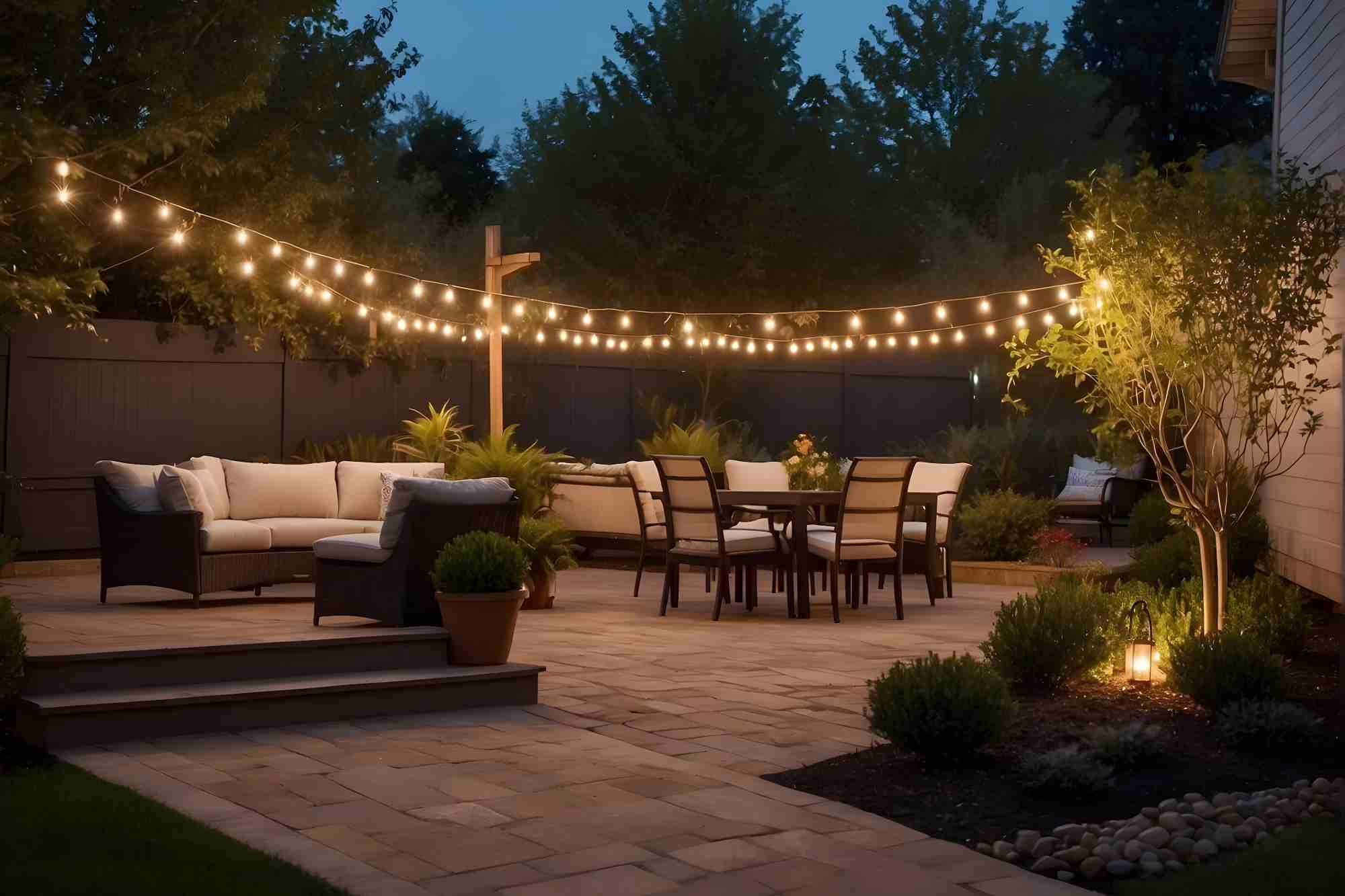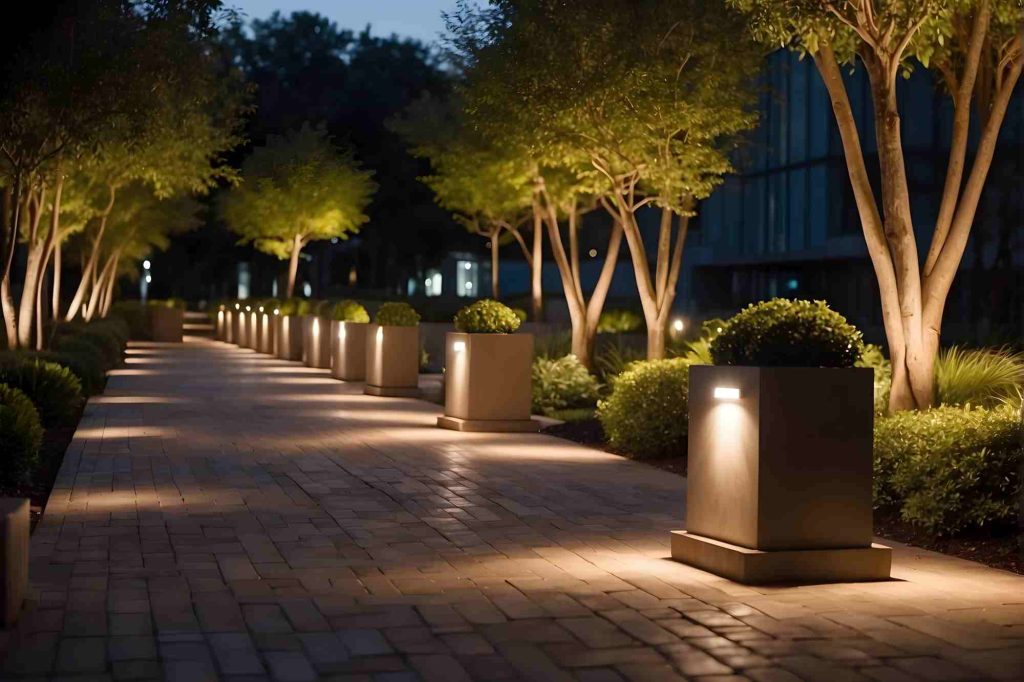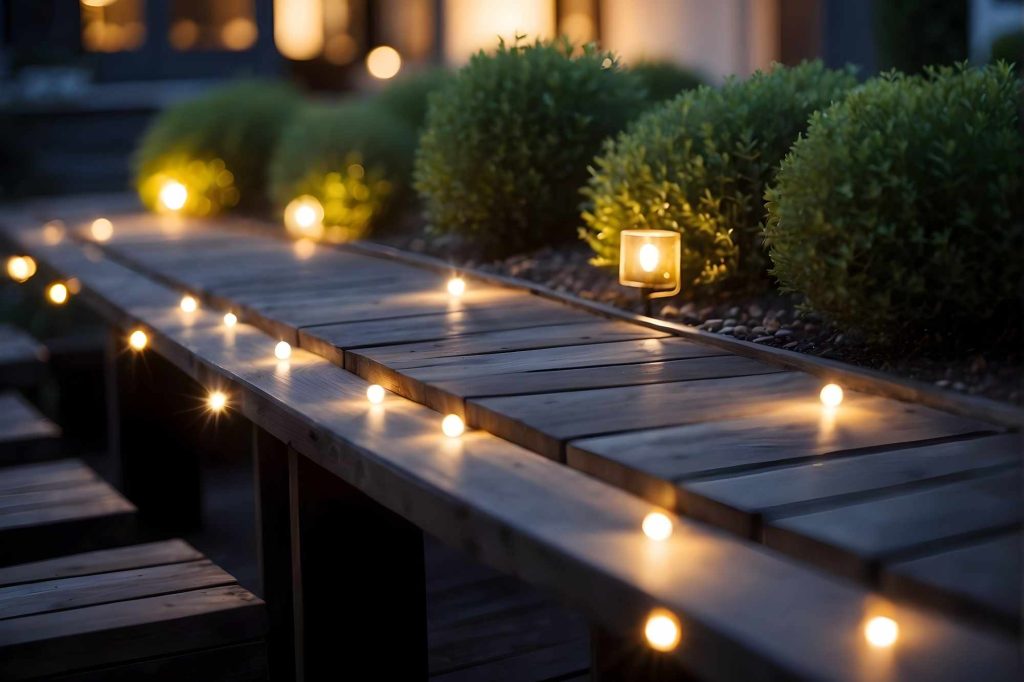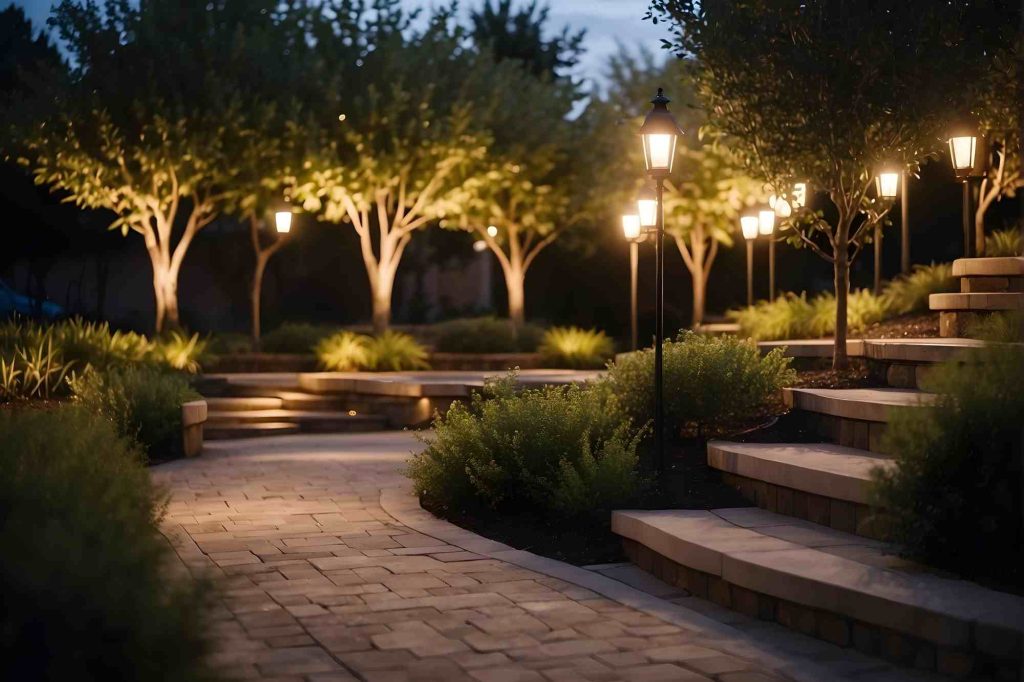Outdoor lighting is an essential aspect of any home’s exterior decor. It not only provides safety and security but also enhances the beauty of the outdoor space. However, to achieve the desired effect, it is important to consider the zoning and placement of outdoor lighting Gilbert AZ carefully.
Zoning refers to the division of outdoor spaces into different areas based on their functionality or purpose. For instance, a patio area may be zoned for dining and entertainment, while a pathway may be zoned for safe passage. Zoning helps in determining the type and placement of outdoor lighting needed for each area.
When it comes to placement, it is important to keep in mind the purpose of the lighting. For instance, task lighting is suitable for areas that require focused illumination, such as outdoor cooking spaces or work areas. Ambient lighting, on the other hand, is ideal for creating a warm and inviting atmosphere for outdoor gatherings. By considering the zoning and purpose of each outdoor area, homeowners can ensure that their outdoor lighting is both functional and aesthetically pleasing.
Table of Contents
Understanding the Basics of Outdoor Lighting
Outdoor lighting is an essential aspect of any home or commercial property. It serves to enhance the beauty of the property, provide safety and security, and create a warm and welcoming atmosphere. There are various types of outdoor lighting fixtures available in the market, and choosing the right one can be a challenge. This section will provide an overview of the basics of outdoor lighting, including the types of outdoor lighting fixtures and choosing the right bulbs for efficiency and effect.
Types of Outdoor Lighting Fixtures
There are several types of outdoor lighting fixtures available, each with its unique features and style. The most common types of outdoor lighting fixtures include:
- Wall-mounted fixtures: These fixtures are attached to the wall and provide an excellent source of light for outdoor spaces such as patios, decks, and entryways.
- Hanging fixtures: These fixtures are suspended from a chain or rod and are perfect for illuminating outdoor dining areas or seating areas.
- Post-mounted fixtures: These fixtures are mounted on a post and are ideal for lighting driveways, walkways, and other outdoor areas.
- Landscape lighting: This type of lighting is used to highlight the features of the landscape, such as trees, shrubs, and other plants.
Choosing the Right Bulbs for Efficiency and Effect
Choosing the right bulbs for outdoor lighting fixtures is essential for both efficiency and effect. LED bulbs are the most energy-efficient and long-lasting bulbs available in the market. They are also available in a wide range of colors and styles, making them a popular choice for outdoor lighting. LEDs are also environmentally friendly, as they do not contain any hazardous materials.
When choosing the right bulbs for outdoor lighting fixtures, it is essential to consider the color temperature of the bulbs. Bulbs with a warm color temperature (2700K-3000K) are ideal for creating a cozy and inviting atmosphere. Bulbs with a cool color temperature (5000K-6000K) are perfect for highlighting outdoor features such as trees and shrubs.
Designing Your Outdoor Lighting Plan
Designing an outdoor lighting plan is an essential step in creating a beautiful and functional outdoor living space. By considering the right zoning and placement of your outdoor lighting fixtures, you can create a warm and inviting atmosphere while also ensuring safety and security. Here are some tips to help you design the perfect outdoor lighting plan.
Creating an Inviting Atmosphere
To create an inviting atmosphere, it’s important to consider the theme of your outdoor living space. Whether you’re going for a modern or traditional look, your lighting plan should complement the overall design. Use a mix of path lights, spotlights, and floodlights to highlight specific features and provide broad illumination for larger areas. Deck and patio lights can also create a warm ambiance in outdoor entertainment spaces.
Safety and Security Considerations
In addition to creating an inviting atmosphere, outdoor lighting can also improve safety and security. Motion sensor lights are a great way to deter intruders and alert you to any potential hazards. Smart lighting controls, timers, and motion sensors can also help you conserve energy and reduce your electricity bill.
Integrating Smart Lighting and Controls
Integrating smart lighting and controls into your outdoor lighting plan can take your outdoor living space to the next level. With smart lighting controls, you can easily adjust the brightness and color of your lights to suit your mood or the occasion. You can also control your lights remotely using your smartphone or tablet.
Placement Strategies for Optimal Lighting
Proper outdoor lighting placement is essential to achieve optimal illumination. By highlighting landscape and architectural features, you can create a beautiful and inviting outdoor space. Additionally, ensuring proper pathway and step illumination is crucial for safety and functionality. In this section, we will discuss some placement strategies for optimal lighting.
Highlighting Landscape and Architectural Features
Accent lighting is an effective way to highlight landscape and architectural features. Uplighting, which involves placing lights at ground level to shine upward, is an excellent way to showcase trees, vegetation, and other architectural features. This technique creates a dramatic effect and adds depth to your outdoor space.
Path lighting is another effective way to highlight landscape features. By placing lights along garden paths, you can create a beautiful and inviting atmosphere. Post-mounted fixtures or string lighting are popular choices for this type of lighting.
Ensuring Proper Pathway and Step Illumination
Proper pathway and step illumination are crucial for safety and functionality. Pathway lights should be spaced consistently to provide balanced illumination. A spacing of approximately 6 to 8 feet between each light fixture is recommended. Additionally, pathway lights should be angled slightly downward to prevent glare and ensure a pleasant walking experience.
Deck lighting is another effective way to ensure proper pathway and step illumination. By placing lights along the edges of your deck or steps, you can create a safe and inviting outdoor space. Seating areas should also be illuminated to create a comfortable and inviting atmosphere.
Maintaining Outdoor Lighting Systems
Maintaining outdoor lighting systems is crucial to ensure optimal performance and longevity of the fixtures. Routine maintenance and upkeep can also help address light pollution and glare issues while promoting energy efficiency and safety.
Routine Maintenance and Upkeep
Regular maintenance and upkeep of outdoor lighting systems are essential to ensure optimal performance and brightness of the fixtures. This includes cleaning the fixtures, replacing burnt-out bulbs, and checking for any damage or wear and tear. It is recommended to check the lights at least every three months, and more frequently in areas with harsh weather conditions or after extreme weather events.
In addition, it is important to schedule regular maintenance appointments with a professional to ensure that the system is functioning properly and to address any issues before they become major problems. This can also help promote energy efficiency and reduce electricity costs by identifying and fixing any inefficiencies or malfunctions.
Addressing Light Pollution and Glare Issues
Light pollution and glare can be major issues with outdoor lighting systems, especially in residential areas. To address these issues, it is important to select fixtures that are designed to minimize light pollution and glare, such as those with shields or lenses that direct light downward.
Additionally, it is important to ensure that the fixtures are properly placed and aimed to avoid shining light into neighboring properties or into the sky. This can also help reduce energy waste and promote energy efficiency by directing light only where it is needed.
Please explore our site for more exciting content if you like this article.








